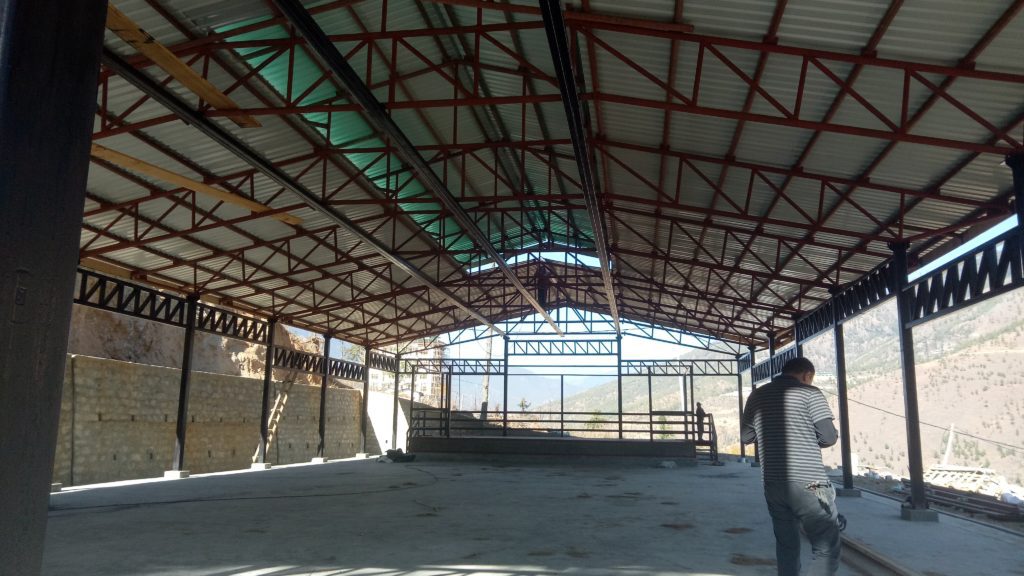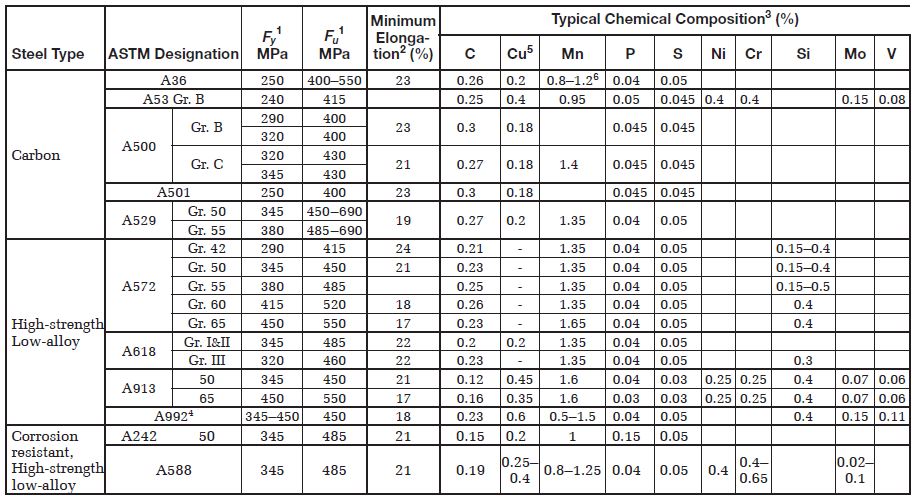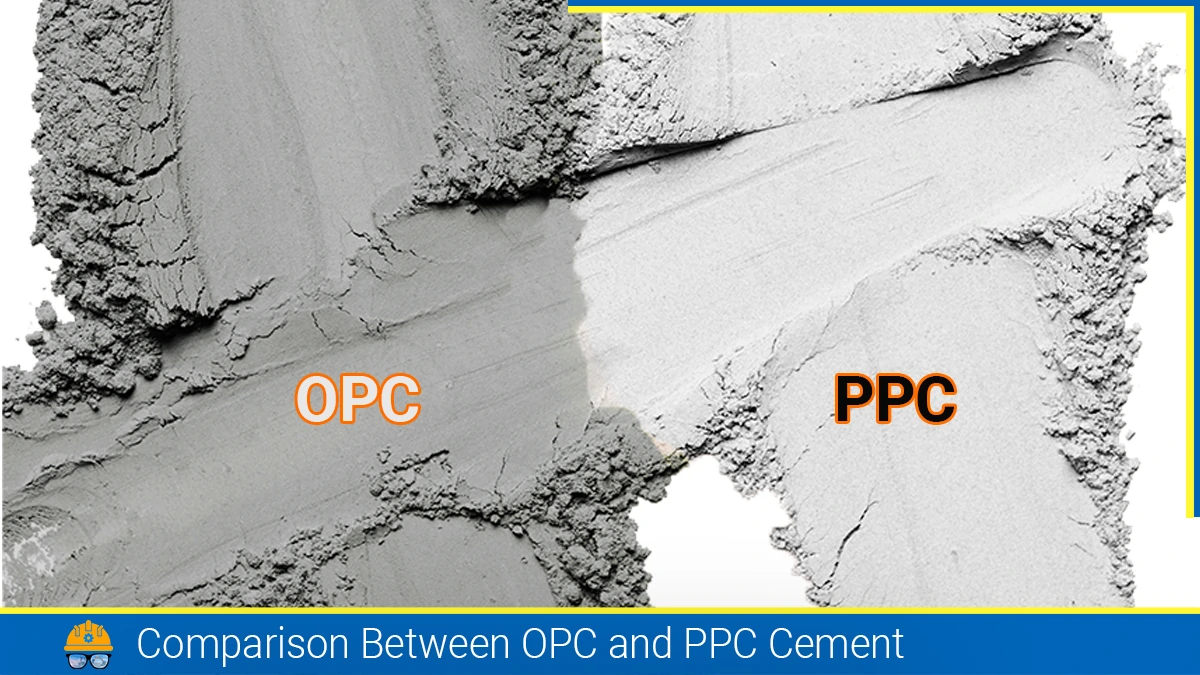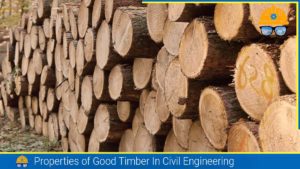In the realm of construction, few materials hold as much significance as structural steel. This versatile and robust alloy has become the backbone of modern architecture, playing a crucial role in shaping the skyline of cities worldwide. From towering skyscrapers to intricate bridges, structural steel provides the strength and flexibility needed to bring ambitious designs to life. In this article, we explore the fascinating world of structural steel, examining its properties, types, applications, and the reasons behind its widespread adoption in the construction industry.
The construction of infrastructure around the world is mostly done with structural steel along with concrete and other construction materials. Steel structures like bridges, pre-engineered buildings, railroads, electrical towers and many other important features such as the Eiffel Tower are made possible by using structural steel.
What is Structural Steel?
Structural steels are common construction materials that come in a variety of shapes and sizes. It is designed to have a good strength/weight ratio. This is also known as specific strength. Structural steel has multiple applications in the field of construction, such as in Bridges, buildings and other civil engineering structures. Many of the structural steels take a specific shape at the cross-section. However, they are elongated and take the form of a beam. The physical (shapes and sizes), mechanical (strength) and chemical properties (carbon content) of structural steel are governed by the standards of the respective countries or industrialized countries.

Common structural shapes
Structural shapes refer to the various geometric forms and profiles that structural steel can be fabricated into to serve specific functions in construction. These shapes are designed to efficiently distribute loads and resist forces, making them a fundamental aspect of structural engineering. Here are some common structural shapes used in construction:
- I-Beams (or W-Beams): I-beams are shaped like the letter “I” and are one of the most widely used structural shapes. They consist of a horizontal top and bottom flange connected by a vertical web. This configuration provides excellent strength and stiffness along the beam’s axis, making I-beams ideal for supporting loads over long spans.
- H-Beams: Similar to I-beams but with a thicker central web, H-beams have wider flanges and are often used for heavier loads or longer spans. They are shaped like the letter “H” and are commonly employed in the construction of large buildings and bridges.
- Channels: Channels have a “U” shape and consist of a back (base) and two flanges. They are often used for structural applications where lightweight yet strong components are required. Channels are commonly utilized in the construction of frames and as supports for various structures.
- Angles: Angles are L-shaped structural elements with two legs at a right angle. They are used for bracing, supporting, or connecting structural components. Angles are versatile and can be used in a variety of applications, such as framing and supporting beams.
- Tubes: Structural steel tubes have a hollow cylindrical shape. They come in various sizes and can be either square or rectangular. Tubes are commonly used in the construction of columns, trusses, and other structural elements where a lightweight yet sturdy shape is needed.
- Pipes: While similar to tubes in shape, pipes are typically used for conveying fluids or gases. In structural applications, pipes might be used as columns or as part of structural frameworks.

Application as per the sectional shape
- Shape (a) wide-flange (W, HP, and M shapes),
- Shape (b) I-beam (S shape),
- Shape (c) channel (C and MC shapes),
- Shape (d) equal-legs angle (L shape),
- Shape (e) unequal-legs angle (L shape),
- Shapes (f) tee, (g) sheet piling, and (h) rail.
Grade of Structural Steel
In the past, specifically, as far back as 1900, only two types of structural steel were utilized in the United States. These were A7 for bridges and A9 for buildings. Despite their similarities, their specifications were eventually combined into a single specification, A7, in 1938. The initial specifications for both A7 and A9 only included requirements for tensile strength and yield point, without any chemical specifications. However, the chemical composition of the steel, particularly its carbon content became more concerning in the 1950s as welding grew more popular for creating structural connections.
American Institute of Steel Construction (AISC) established five grades of steel for structural use in 1964. The AISC 2005 Load and Resistance Factor Design Specification for Structural Steel Buildings further identifies 28 different ASTM steel designations intended for structural applications.
Properties of Structural Steel
1. Composition of Structural Steel
Structural steel is primarily composed of iron and small amounts of other elements to enhance its physical and mechanical properties. The specific composition of steel can vary depending on the grade and type of steel, as well as the manufacturing process. However, a common composition for structural steel, particularly for widely used grades like ASTM A36, typically includes the following elements:
- Iron (Fe): The main component of steel, providing its basic strength and structural integrity.
- Carbon (C): Carbon is a key element that influences the strength and hardness of steel. The carbon content in structural steel is typically low to moderate. In ASTM A36 grade, it is added about 0.26%.
- Manganese (Mn): Manganese is often added to improve the steel’s strength and toughness. It also contributes to the steel’s hardenability.
- Phosphorus (P): Phosphorus is kept to a low level in structural steel to avoid detrimental effects on the material’s ductility and toughness. In ASTM A36 grade of steel, it is just added to 0.04%.
- Sulphur (S): Sulphur is typically kept at low levels to improve the steel’s machinability. However, excessive sulphur content can lead to brittleness.
- Phosphorus (P): Phosphorus is often limited in steel alloys because it negatively impacts the Steel’s durability and strength.
- Silicon (Si): Silicon is added to enhance the steel’s strength and deoxidize the molten steel during the manufacturing process.
- Copper (Cu): Copper may be present in small amounts and can improve corrosion resistance, particularly in weathering steel.
- Molybdenum (Mo): Molybdenum enhances the strength of steel at high temperatures and improves its resistance to corrosion.
- Niobium (Nb) or Vanadium (V): These elements are sometimes added to micro-alloyed steels to enhance strength and toughness.
- Other Trace Elements: Depending on the specific grade and intended use, trace elements such as chromium, nickel, and copper may be present in small amounts to impart specific properties to the steel.

2. Physical Properties
The physical properties of structural steel are crucial factors that determine its suitability for construction applications. Here are some key physical properties of structural steel along with typical values:
- Density, ρ: The density of structural steel is 7750 to 8100 kg/m3.
- Young’s Modulus of Elasticity, E: Typical values for structural steel range from 190-210 GPa
- Poission’s ratio: The acceptable value ranges from 0.27 to 0.3.
- Co-efficient of thermal expansion, αt: 12 x 10-6/°C
3. Mechanical Properties
The mechanical properties of structural steel are critical for understanding its behaviour under various loads and conditions. Here are some key mechanical properties of structural steel along with typical values:
- Tensile Strength: 400 – 550 MPa (58,000 – 79,000 psi)
- Yield Strength: Typical Value: 250 MPa (36,000 psi)
Types of Structural Steel
Structural steel comes in various types, each with specific properties and applications. The choice of structural steel type depends on factors such as the intended use, load-bearing requirements, and environmental conditions. Here are some common types of structural steel:
Carbon Steels:
There are various types of carbon steel that are used for different purposes. The types of carbon steel are Low carbon steel, Medium carbon steel, High carbon steel and alloy carbon steel. The hardness of steel increases with the increase of carbon contained in the steel. It is mostly used in pipes and tubing.

High Strength Low Alloy Steels:
This kind of steel is designed to have better mechanical properties and be more resistant to atmospheric corrosion than carbon steel. They contain manganese up to 2.0% and small portions of other alloying elements such as chromium, nickel, molybdenum, nitrogen, vanadium, niobium, and titanium. It is mostly used in structural shapes and plates.
Corrosion Resistant High Strength Low Alloy Steels
This type of steel is very good at resisting corrosion and has very high strength. They are also called weathering-resisting steel. Are mostly used in outdoor sculptures, railroads, hopper cars, etc.
Forged Steels:
Forging is the process of shaping the metal while it is in a solid state. It is done by applying mechanical and thermal energy to steel ingots or billets. This process introduces a uniform grain structure to the material, which decreases discontinuity in the matrix by removing voids, and gas bubbles and increases overall strength. Some of the steels are made of Forged steel. Example of Forged steel is: –
- A668 – Forging steel
Quenched and Tempered Alloy Steels:
This is a type of structural steel (for example A514) mostly used in building constructions. As can be understood from its name, this type of steel has undergone quenching and tempering heat treatment steps. Some of the examples are: –
- A514 – Structural shapes and plates
- A517 – Boilers and pressure vessels.
- Eglin steel – Inexpensive aerospace and weaponry items.
Also, read: Types of Steels and Their Usage in Construction
Application of Structural Steel
Structural steel has extensive usage across various industries and construction projects due to its versatility, strength, and durability. Here are some common applications and uses of structural steel:
- Building Construction: It is a primary material in the construction of commercial buildings, residential homes, high-rise buildings and industrial facilities. It provides the framework for the entire structure, including beams, columns, and braces.
- Skyscrapers and High-Rise Buildings: The ability to support heavy loads over long spans makes it an ideal choice for skyscrapers and high-rise buildings. Iconic structures like the Empire State Building and Burj Khalifa showcase the use of structural steel in tall constructions.
- Bridges: Structural steel is widely used in the construction of bridges, including beam bridges, arch bridges, and suspension bridges. Its high strength-to-weight ratio allows for the creation of long spans, and its durability contributes to the longevity of the bridge.
- Industrial Structures: Steel is the material of choice for constructing industrial facilities such as warehouses, factories, and manufacturing plants. Its strength and load-bearing capabilities are essential for supporting heavy machinery and equipment.
Also, read: Types of Bricks Used in Building Construction | 6 Types of Bricks
FAQs:
Q: What is structural steel?
Ans: Structural steel is a versatile construction material primarily composed of iron with small amounts of other elements. It is widely used in building and infrastructure projects for its strength, durability, and flexibility.
Q: What are the common shapes of structural steel?
Ans: Common structural steel shapes include I-beams, H-beams, channels, angles, tubes, and pipes. These shapes are designed to efficiently bear loads and provide structural support.
Q: How does the carbon content affect the steel quality?
Ans: The higher carbon content affects the steel quality by lowering its melting point.
As the percentage of carbon content increases, steel gains the capacity to achieve greater hardness and strength when subjected to heat treatment. Nevertheless, this enhancement in hardness is accompanied by a reduction in ductility. Regardless of the heat treatment applied, higher carbon content diminishes the weldability of the steel. In the case of carbon steels, higher carbon content results in a lower melting point.
Q: What are the applications of structural steel?
Ans: Structural steel is used in a wide range of applications, including the construction of buildings, bridges, industrial structures, residential homes, and various infrastructure projects due to its strength, versatility, and durability.
Q: What is the significance of yield strength in structural steel?
Ans: Yield strength is the stress level at which structural steel undergoes plastic deformation. It is a crucial property as it represents the point at which permanent deformation occurs, and engineers use it to design structures to withstand loads safely.
Q: What are the advantages of using structural steel in construction?
Ans: Structural steel provides advantages such as a high strength-to-weight ratio, speed of construction, cost efficiency over the long term, and versatility in design. Its durability and resistance to environmental factors contribute to its popularity in construction.
Q: How does weathering steel differ from other types of structural steel?
Ans: Weathering steel, also known as Corten steel, forms a protective rust layer over time, eliminating the need for additional coatings. It is often used in outdoor structures and exhibits enhanced corrosion resistance.
Q: What is a rolled steel section?
Ans: A rolled steel section refers to a category of structural steel shapes that are produced by rolling semi-finished steel products, such as billets or blooms, through a series of shaping stands in a rolling mill. The rolling process imparts the desired shape to the steel, resulting in a variety of standardized shapes with specific cross-sectional profiles.
Q: What is a cold-formed steel section?
Ans: Unlike rolled sections, which are formed through hot rolling processes, cold-formed sections are produced by shaping steel at room temperature, typically through processes such as bending, pressing, or roll forming thin sheets of steel.
References:
- Wikipedia contributors. (2023, October 25). Carbon steel. Wikipedia. https://en.wikipedia.org/wiki/Carbon_steel
- Wikipedia contributors. (2023, September 21). Structural steel. Wikipedia. https://en.wikipedia.org/wiki/Structural_steel
- Structural steelwork. (n.d.). Designing Buildings. https://www.designingbuildings.co.uk/wiki/Structural_steelwork
![]()







